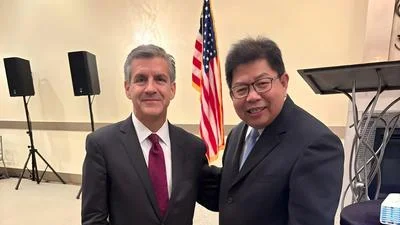As school districts around the state build on the Youth Sports Concussion Act, formally signed into law by Gov. Bruce Rauner last year, sports medicine physician Dr. Leda Ghannad has closely followed all protocol changes being implemented across the state related to concussions, and she said things are moving in the right direction.
The Youth Sports Concussions Act mandates that all school boards have a stated policy on head injuries that complies with state standards by installing concussion-oversight teams.
“The whole point is the medical needs of the student-athletes are being addressed,” Ghannad, who regularly works with young athletes who have suffered concussion-type injuries at Midwest Orthopaedics at Rush in Chicago, said. “The goal was to create a group and policy that advocates on the side of athletes, and I’m convinced what we have in place now is much better than what we had before.”
Woodstock Community Unified School District 200, for example, is building on the act, installing concussion oversight teams.
The new teams will consist of the school principal, nurse psychologist, athletic trainer and athletic director. At the district level, teams also will include Woodstock Director of Nursing Lisa Tate and Assistant Superintendent George Oslovich.
All team members are entrusted with protecting students from long-term concussion damage and working with Centegra Health System, creators of the program, in diagnosing and helping young athletes recover from all concussion-related injuries.
District 200 also relies on Immediate Post-Concussion Assessment and Cognitive Testing (ImPACT) in monitoring athletes, which requires all athletes to submit to baseline ImPACT testing prior to the start of the first practice. For athletes under 12, tests are mandated each year, and for older athletes, every two years.
Whenever an athlete is thought to be suffering from concussion-like symptoms, a post-injury test will be administered, with results compared with the originally collected data. In 2015, 846 students district-wide completed baseline testing, and 35 completed post-injury tests.
Ghannad said she is of the mind that the vast majority of young concussion sufferers get better through a conservative approach that gradually puts them back in the classroom and keeps them on the sidelines to recover, under the district’s “Return to Learn” protocols, which aim to ensure the student is fully recovered before taking the field again.
Even as a 2015 Journal of American Medical Association (AMA) study found that concussion rates among high school athletes are 11 percent higher than for college athletes, Ghannad said she doesn't pay attention to the growing national chatter about how maybe it's time to restrict or even get rid of public high school football.
In her mind, the smoking gun justifying such drastic actions simply isn’t there.
“They are things we can do to make it safer, like less tackling in practice, but there’s just not enough evidence to really suggest it should be eliminated,” Ghannad said. “I mean, the second most concussion injuries I get comes from girls’ soccer players, where there isn’t anywhere near the same level of high-velocity contact.”
In late 2015, Cook County Judge LeRoy Martin dismissed a lawsuit that sought to drastically alter the way the Illinois High School Association (IHSA) deals with concussions by requiring that all schools have medical personnel with concussion-related expertise on hand for all football games.
Plaintiff Alex Pierscionek told the court that he suffered crippling headaches, memory lapses, light sensitivity and mood changes stemming from a concussion he suffered while playing at South Elgin High.
Some researchers also have found that concussions and head hits are bad enough for high school student-athletes to cause impaired memory, inability to focus and pay attention, absenteeism, and poor academic performance.
But in rendering his verdict, Martin said the "IHSA is simply a governmental entity charged with safeguarding student athletes. Imposing broader liability on this defendant would certainly change the sport of football and potentially harm it or cause it to be abandoned."
By recent estimates, some Chicago-area schools already spend as much as $100,000 per year to maintain their football programs. Even those exorbitant amounts are nothing more than a yard on a football field when compared with the $69.9 million a Dallas suburban school district recently said it plans to pay for the construction of a 12,000-seat state-of-the-art high school football arena.
In standing by her views, Ghannad also lets it be known that she is not just all talk in voicing her support for a sport that is played by well over a million high school students across the country.
“Right now, I don’t have kids, but if I did, I would let them play football,” she said. “At this point, we simply don’t know enough to do otherwise.”






 Alerts Sign-up
Alerts Sign-up